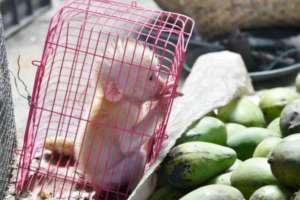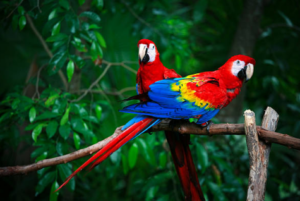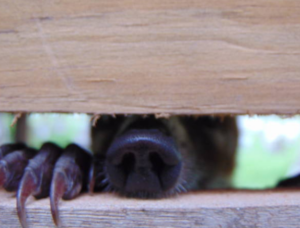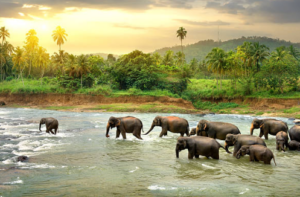Wildlife Trafficking

The natural world is a treasure trove of biodiversity, a delicate tapestry of life, and a source of wonder and inspiration for humanity. Yet, lurking in the shadows is a grave threat that jeopardizes the very existence of countless species. Wildlife trafficking, the illegal trade in animal and plant products, is pushing numerous species to the brink of extinction. In this blog, we will delve into the dark world of wildlife trafficking and explore how this illicit trade is endangering the beauty of our planet by robbing us of some of its most exquisite inhabitants.
The Allure of Wildlife: A Global Treasure
The sheer diversity of life on our planet is a source of unending wonder. From the deepest depths of the oceans to the towering heights of mountains, nature has sculpted a dazzling array of life forms. Each species is an eloquent expression of evolution, adapted to its environment and often endowed with unique features that capture our imagination.
1. A Symphony of Colors and Patterns
One of the most enchanting aspects of wildlife is the rich tapestry of colors and patterns that adorn animals and plants. The Amazon rainforest, for instance, is home to a mesmerizing spectrum of life, from the iridescent plumage of parrots to the vibrant scales of poison dart frogs. Each color and pattern serves a purpose, from camouflage and signaling to thermal regulation, and adds to the overall beauty of the ecosystem.
2. The Enigma of Behavior
Beauty in the natural world extends beyond appearances. It encompasses the behaviors and interactions of wildlife. Whether it’s the intricate courtship dances of birds of paradise, the synchronized movements of a school of fish, or the nurturing bonds between elephants and their young, wildlife’s behavior is a captivating display of life’s depth and complexity.
3. Elegance in Adaptation
The world’s beauty lies in the stunning adaptability of life to diverse environments. Consider the Arctic fox, which dons a pristine white coat in winter, blending perfectly with the snow-covered landscape, and then molts into a brown coat in summer. This remarkable adaptation showcases the innate beauty of survival.
4. Ecosystem Services and Beauty
Beauty in the natural world isn’t confined to the superficial; it extends to the profound services ecosystems provide. Coral reefs, known as the “rainforests of the sea,” harbor a kaleidoscope of colors, but they also protect coastlines from erosion, provide habitats for countless species, and support the livelihoods of coastal communities. The beauty of these ecosystems is intertwined with their functionality.
5. Artistic Inspiration and Cultural Significance
Throughout human history, wildlife has been a muse for artists, writers, and storytellers. From ancient cave paintings depicting bison and horses to intricate Japanese woodblock prints featuring birds and flowers, the beauty of nature has been a wellspring of inspiration for human creativity.
Wildlife also holds cultural significance. In various societies, animals and plants play vital roles in myths, folklore, and rituals. They are often considered sacred, symbolizing traits such as strength, wisdom, or grace.
6. Ecological Harmony
The beauty of wildlife is inseparable from the intricate web of ecological relationships. Every species, whether large or minuscule, plays a part in the grand symphony of life. Predators regulate prey populations, herbivores shape landscapes, and pollinators facilitate the reproduction of plants. The harmonious interplay of species contributes to the overall beauty of ecosystems.
7. The Intrinsic Value of Life
Beyond their utility to humans and their aesthetic appeal, wildlife holds intrinsic value. Each species is a product of millions of years of evolution, representing the culmination of an unbroken chain of life. Their existence enriches the planet and adds depth and richness to the story of life on Earth.

The Underbelly of Beauty: Wildlife Trafficking
The illicit trade in wildlife is a clandestine underworld driven by a complex interplay of factors that pose a grave danger to some of the world’s most magnificent species. These factors include demand, supply, and profit motives, and they converge to create a multi-billion-dollar industry that threatens the very essence of our planet’s beauty.
1. The Demand for Exotic Pets
The allure of exotic pets, from vibrantly colored birds to rare reptiles, is a powerful force driving wildlife trafficking. Collectors and enthusiasts often seek the novelty of owning a unique and exotic animal, oblivious to the consequences. The demand for these pets has led to the widespread capture of wild animals from their natural habitats, often under inhumane conditions.
2. Traditional Medicine and Beliefs
Traditional medicine systems in several parts of the world incorporate animal parts and derivatives into their practices, believing they possess healing properties. For example, rhino horn is considered a cure for various ailments in some cultures. The demand for these animal parts drives poaching, endangering species and undermining global conservation efforts. Scientifically, these products have little to no proven medicinal value.
3. Luxury Goods: Aesthetic Over Extinction
The luxury industry’s insatiable demand for products made from endangered species is another facet of wildlife trafficking. Ivory, with its intricate carvings and artistic appeal, is sought after for sculptures and jewelry. Exotic animal leather, such as that from crocodiles, pythons, and iguanas, is used for high-end fashion items. The price these species pay for the beauty of these luxury goods is often extinction or severe population declines.
4. Souvenirs: The Hidden Cost of Trinkets
Tourists, in their quest for mementos and souvenirs, often inadvertently contribute to wildlife trafficking. Products like tortoiseshell trinkets, coral jewelry, and seashell ornaments may seem harmless, but they are often derived from species threatened with extinction. These purchases unwittingly endorse an industry that thrives on the destruction of the planet’s natural beauty.
5. The Role of Online Marketplaces
In the digital age, the illicit wildlife trade has expanded its reach through online marketplaces. The anonymity of the internet allows for the discreet exchange of wildlife products, making it even more challenging to combat. Numerous online platforms unwittingly facilitate this trade, and a concerted effort is required to curb this illegal activity.
6. Corruption and Organized Crime
The wildlife trafficking industry often operates in conjunction with organized crime networks and corrupt officials. These criminal syndicates exploit gaps in legal systems, bribing or coercing individuals to further their trade. The immense profits involved make wildlife trafficking an attractive endeavor for these organizations.
7. The Impact on Species and Ecosystems
The consequences of wildlife trafficking are not limited to individual species. The rapid depletion of certain species can have a domino effect on ecosystems. For instance, the overhunting of predators can lead to an increase in prey populations, affecting vegetation and other species lower in the food chain. This can result in imbalances and the degradation of entire habitats.
8. The Looming Extinction Crisis
Perhaps the most pressing concern is the imminent risk of extinction for many species. Iconic animals, such as rhinos, elephants, and big cats, are teetering on the brink of oblivion. Every time a species disappears, the world loses not only the raw beauty of that animal but also the unique role it plays in the intricate dance of life on our planet.
9. Ethical, Legal, and Cultural Dilemmas
The battle against wildlife trafficking is fraught with ethical, legal, and cultural dilemmas. It necessitates striking a delicate balance between respecting cultural traditions, pursuing economic interests, and safeguarding the global ecosystem.

Endangered Beauty: Species on the Brink
The consequences of wildlife trafficking extend far beyond the plight of individual animals and plants. Entire species and ecosystems are under severe threat.
- Elephants: The Gentle Giants in PerilIvory poaching has driven African elephants to the edge of extinction. In the 1970s, there were around 1.3 million elephants on the continent; now, fewer than 415,000 remain. These intelligent and majestic creatures are symbols of the wild’s beauty.
- Big Cats: Roaring ShadowsTigers, lions, cheetahs, and leopards are among the world’s most iconic and beautiful predators. Poaching for their skins, bones, and body parts, as well as habitat loss, has led to a severe decline in their populations.
- Pangolins: The Most Trafficked Mammals on EarthThe pangolin is a small, scaly mammal with a charming, almost mythical appearance. Their scales are highly prized in traditional medicine, especially in parts of Asia, leading to rampant poaching and illegal trade. All eight species of pangolins are threatened with extinction.
- Sea Turtles: Ocean Wonders at RiskFrom the graceful leatherback to the colorful hawksbill, sea turtles embody the beauty of the ocean. They face threats from poaching for their meat and eggs, entanglement in fishing gear, and plastic pollution in their habitats.

In many cultures, traditional medicine plays a significant role in healthcare. Ancient beliefs and practices are deeply ingrained in societies, often involving the use of animal parts. While respecting cultural traditions is important, it is crucial to evolve and adapt to the modern understanding of science and conservation. Conservationists and organizations are working to raise awareness and promote alternatives in traditional medicine.
Beyond the aesthetic and emotional loss, the disappearance of species through wildlife trafficking has far-reaching ecological consequences. Every species plays a unique role in its ecosystem, and the loss of one can set off a chain reaction affecting other species and the environment. This disruption can lead to imbalances, increased disease spread, and degraded habitats.
Thankfully, there are numerous conservation organizations, governmental bodies, and concerned individuals who are dedicated to preserving our planet’s beauty. Efforts include the enforcement of wildlife protection laws, the promotion of sustainable alternatives, and raising awareness about the importance of conservation.
The global issue of wildlife trafficking threatens some of the world’s most beautiful creatures and their habitats. Yet, there is hope. By raising awareness, supporting conservation efforts, and making ethical choices, we can collectively protect the beauty of our planet’s biodiversity. The beauty of these creatures is not just skin deep; it lies in the interconnected web of life they represent. It is a beauty worth preserving, and it is our collective responsibility to do so.

